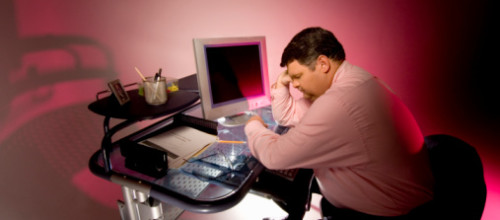
Combating “iPhone Neck” with Correct Posture
It seems that practically everyone has a smartphone these days, and active smartphone users are essentially tethered to their devices. Using a smartphone all day, every day, actually impacts your posture, and most people don’t even realize it’s happening!
Do you ever experience headaches in the back of your head or behind your eyes? What about neck or shoulder pain, or a radiating pain/numbness, which may be accompanied by a tingling or burning sensation in your arms? Do you ever wake up in the morning with a stiff neck? Have you noticed that these symptoms have gotten worse over time? Do you realize it most when you’re driving, using your computer, sitting in a reclined position, or using your phone? Correct posture may be your solution.
If your answer to any of those questions was “yes,” you may be suffering from what some are calling “iPhone neck,” which is an ailment that develops from being bent forward for too long at one time. Our society spends a much greater amount of time in a flexed position, because we watch TV, use computers, drive, and text, much more now than ever before. The ill effects of people who don’t exhibit correct posture keep growing and growing.
The effects that smartphones and computers have had on our posture decline have become more obvious lately. Our general population has gotten into the bad habit of bending forward when we eat, sitting in a flexed position when we drive, and lounging in front of the TV in a cushy chair that we sink deep, down into—all of these things force our spine to flex unnecessarily.
In a resting position (sitting with correct posture), the spine has natural curves that are meant to reduce the stress on it by up to ten times. If you think about the natural shock absorption of your spine, it’s similar to that of a spring—because it’s curved, there isn’t a single point that’s bent in particular, so the stress is distributed throughout the entire length of the spring. The same goes for your spine.
Modern activities have a tendency to push our natural curves into flexed positions, which puts a lot of pressure on the joints in our bodies. There was a study done to measure intervertebral disk pressure in the neck: when people stood with correct posture, there were 12 pounds of pressure on a disk, but when the people moved their heads forward, the pressure tripled three times! Putting excessive pressure on these disks potentially leads to accelerated disk degeneration, arthritis, disk bulging or herniation.
Reports state that 60 percent of people over 40 have some degree of cervical disk degeneration, and these effects are being found in younger people more frequently, likely due to their increased use of smartphones.
When you position your head forward, the muscles at the base of your skull are compressed, which can cause you to have a headache. This type of muscle compression often causes pain in the back of the head, which can then radiate into the forehead or behind the eyes. Another contribution to this problem is muscle spasms.
When you damage the structures in your neck, you can also experience pain that radiates into the top of your shoulder, between your shoulder blades and into your arm. You’ll usually only feel this on one side, and symptoms may include pain, numbness, tingling, burning, and aching. If you use a computer, drive, eat, or read while bending forward, you’re more likely to experience this.
Working On Correct Posture
How can you fix these posture-related problems? Fortunately, most of these symptoms can be fully eradicated by focusing on exhibiting correct posture. You should contact your physical therapist to help you. Depending on the activities you participate in during which you exhibit poor posture, you’ll have to adjust your behavior accordingly. For example, if you bend forward when you drive, you’ll have to work on sitting with better posture. If you bend forward while using a computer, you may need to get a new chair to support your posture correction.
In addition to actively trying to use correct posture, incorporating different stretching exercises can help alleviate the pain by strengthening your upper back. Stretching your chest and the front of your neck can help, too. Your physical therapist can help with cervical traction, which can help disk-related symptoms, as well as soft-tissue mobilization and stretches that can help to relax tight muscles. Changing long-term habits isn’t easy, but the reward is worth the work.
Take a minute to look at your current position while you’re reading this. Are you holding your head straight? If you stand up, you can perform a wall test to find your “normal posture.” Stand against the wall with your buttocks, shoulders, and the back of your head touching the wall, keeping your eyes level. This is considered “normal” posture, but isn’t necessarily possible for everyone to attain. Your “normal” posture may need to be adjusted depending on your individual conditions, so it’s important to consult your physical therapist about what’s best for you.
Get in touch with our team today to start working on sitting with correct posture and alleviating the symptoms of iPhone neck!
